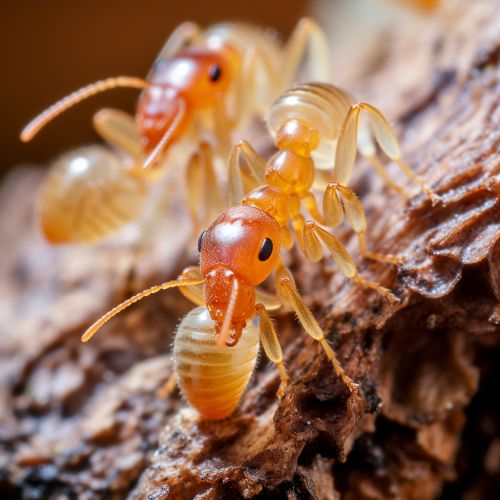Odontotermes
Taxonomy and Description
The Odontotermes is a genus of termites in the family Termitidae, known for their significant role in soil turnover and nutrient cycling in tropical ecosystems. The genus comprises numerous species distributed across various regions, particularly in Africa and Asia. The name Odontotermes is derived from the Greek words "odontos," meaning tooth, and "termes," meaning termite, referring to the distinctive tooth-like structures present in the soldiers of this genus.


Biology and Behavior
Odontotermes termites are social insects, living in large, complex colonies. Each colony is divided into several castes, including the queen, king, soldiers, and workers. The queen and king are the reproductive members of the colony, while the soldiers and workers perform various tasks such as foraging, nest building, and colony defense. Odontotermes termites are known for their elaborate mound-building behavior, creating intricate structures that can reach several meters in height.
Ecological Role
As detritivores, Odontotermes termites play a crucial role in nutrient cycling in the ecosystems they inhabit. They feed primarily on dead plant material, including wood, leaf litter, and soil organic matter. Through their feeding and tunneling activities, they contribute to soil turnover and the breakdown of organic matter, thereby enhancing soil fertility and structure. Moreover, their mounds serve as microhabitats for various other organisms, contributing to biodiversity.
Interaction with Humans
While Odontotermes termites are beneficial to the environment, they can also cause damage to human structures and crops. Some species are known to attack wooden structures, leading to significant economic losses. However, their ecological importance often outweighs the potential harm they cause, and they are considered a key component of sustainable agricultural systems in many regions.
